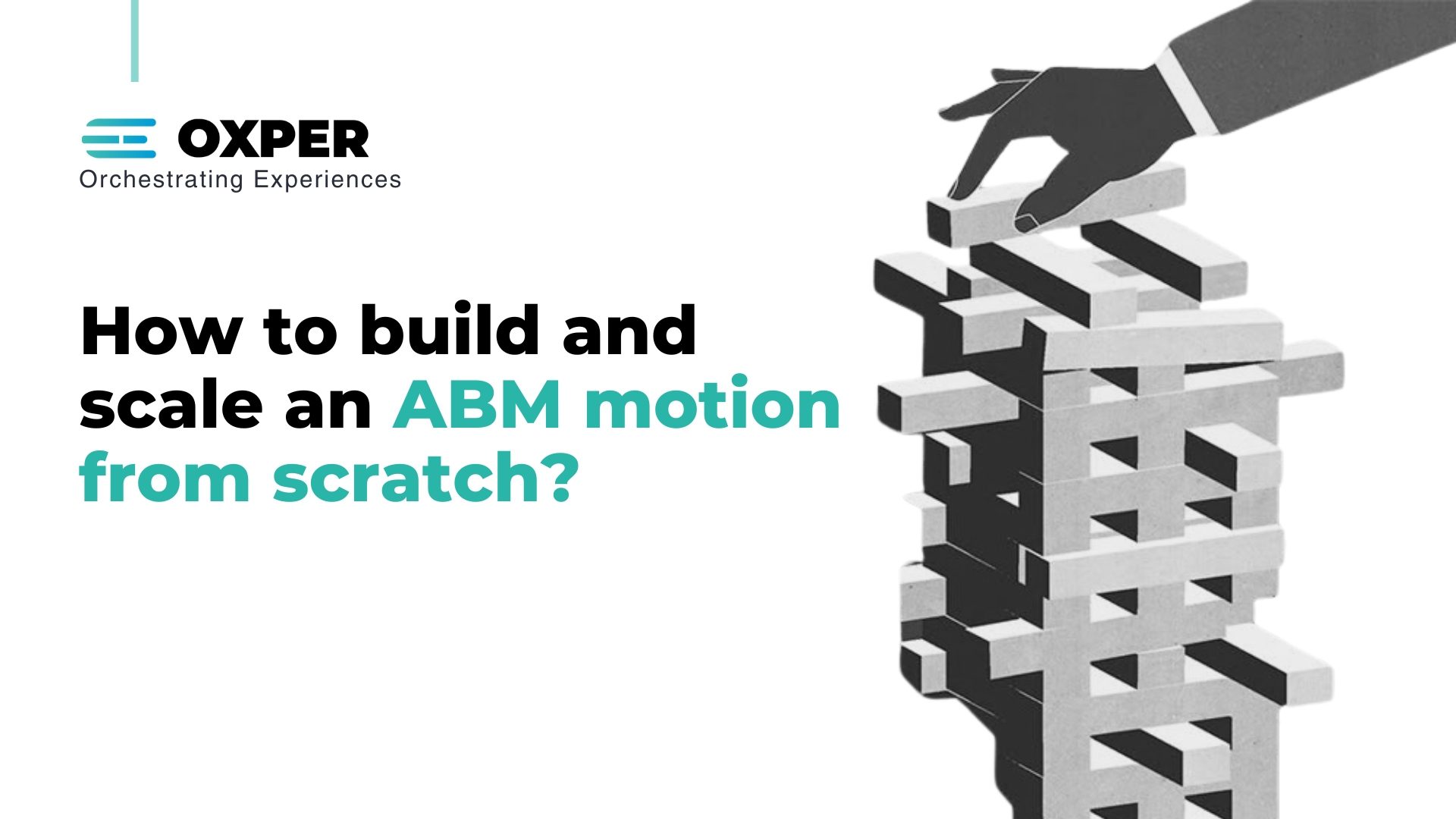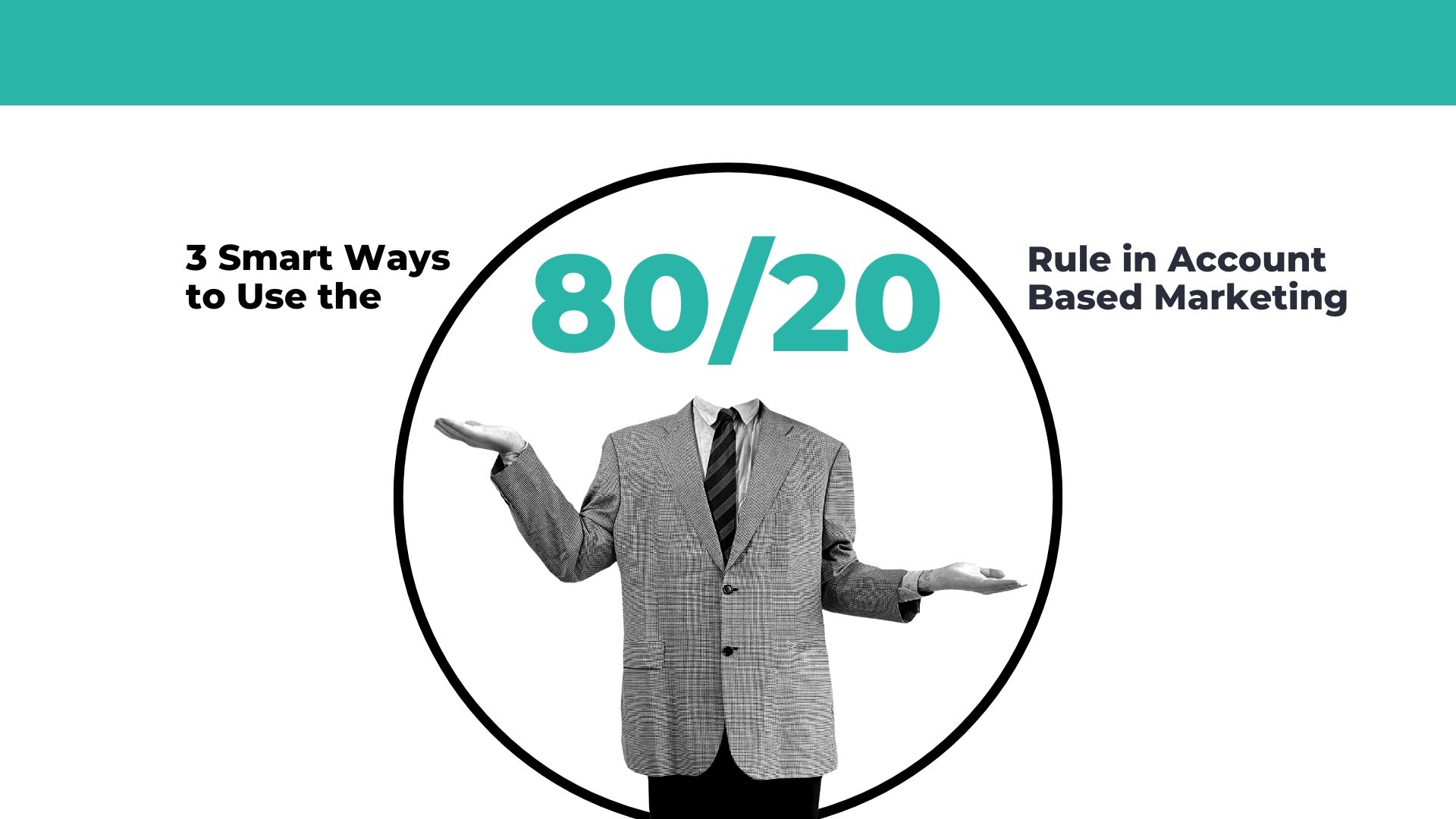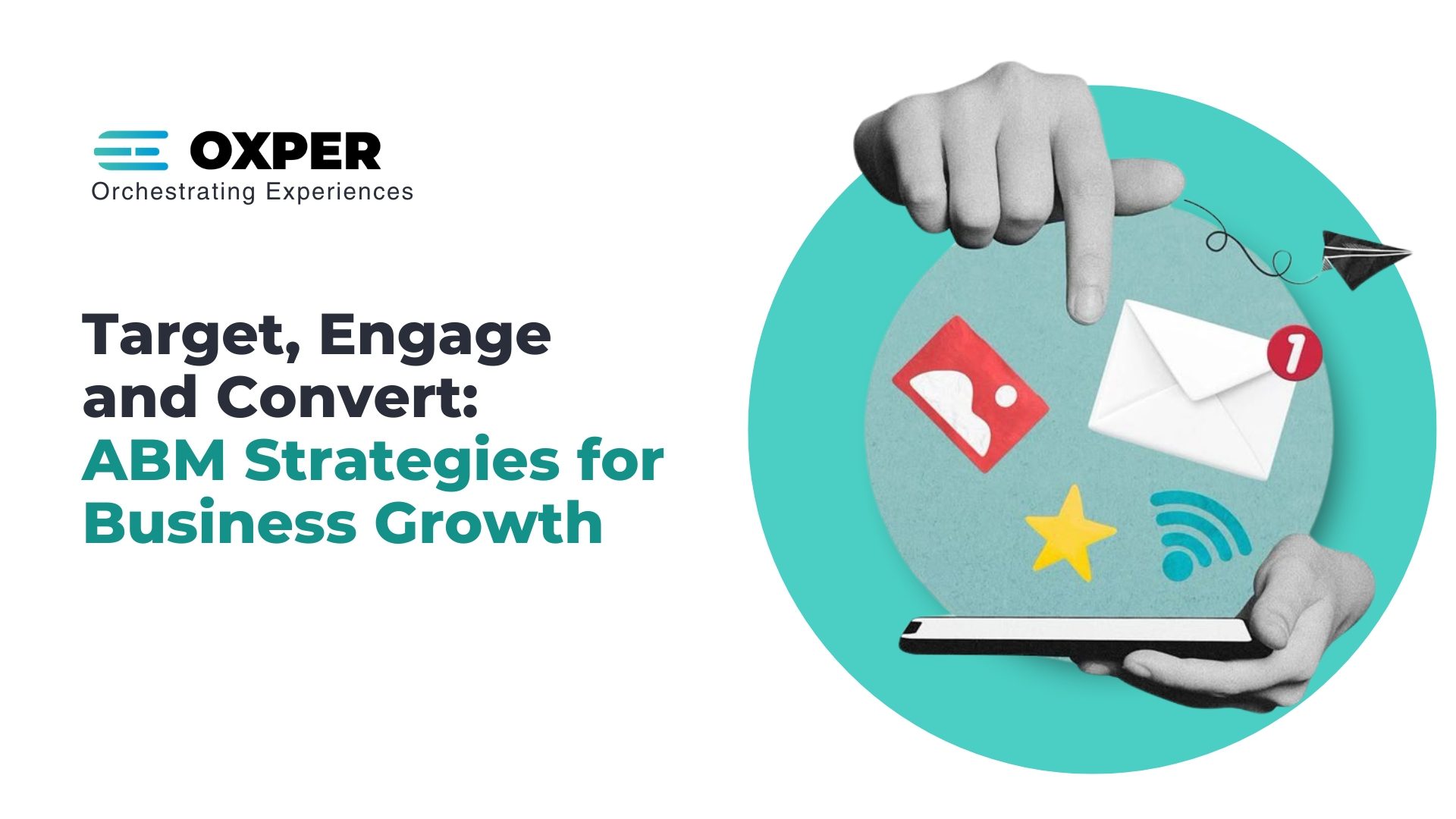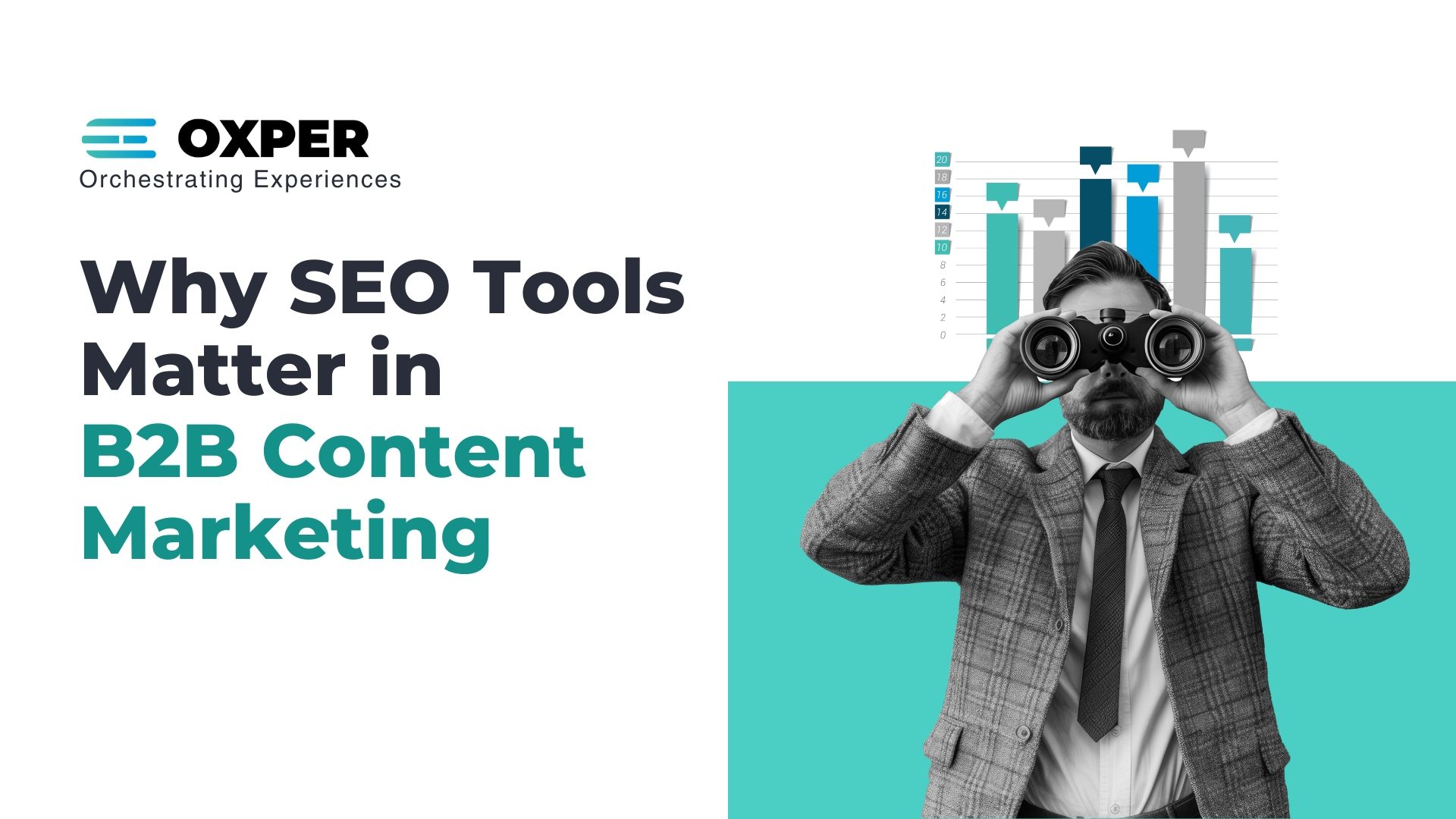Introduction
B2B customer expectations have evolved rapidly, with personalization becoming a core demand across every touchpoint. In this landscape, businesses are moving beyond traditional account-based marketing (ABM)—a strategy focused on targeting high-value accounts with personalized campaigns—toward a more comprehensive approach called account-based experience (ABX).
ABX builds on the foundation of ABM by leveraging data insights to orchestrate highly relevant, personalized experiences throughout the entire B2B buying journey. It merges the engagement strengths of inbound marketing with the precision of ABM, creating a truly customer-centric strategy. When executed effectively, ABX has the potential to outperform every other growth strategy for B2B companies.
ABX vs. ABM: Key Differences
Feature | Account-Based Marketing (ABM) | Account-Based Experience (ABX) |
Approach | Marketing-led, sales-supported | Customer-led, cross-functional |
Focus | Campaign-centric | Experience-centric |
Personalization | Limited to target segments | Hyper-personalized across the journey |
Data Use | Basic firmographics and intent data | Real-time, behavior-driven insights |
Customer Journey | Focuses on acquisition | Covers entire lifecycle: acquisition to retention |
Measurement | Campaign metrics (e.g., leads, clicks) | Experience metrics (e.g., engagement, satisfaction) |
Team Collaboration | Mostly marketing + sales | Marketing, sales, customer success, product teams |
Why ABM Isn’t Enough
Account-based marketing services have been around for a while, but it only started making headway about five years ago. In the established ABM model, sales and marketing teams align to achieve valuable accounts, bigger deal sizes, greater ROI and effective long-term growth. Having said that, there are still significant silos in this approach, where customer success is not routinely involved.
ABX confronts this issue head on, pushing ABM to the next level, a 2.0 version, if you will. It starts by acknowledging that it’s not just marketing and sales that are important in any relationship with the customer. What actually matters is how the entire organisation interacts with each customer across the full customer lifecycle, to deliver the maximum value.
In today’s digital era, customers buy experiences, and the way your brand interacts with customers is what influences revenue, satisfaction, and retention. ABX is a holistic approach that ties marketing, sales and customer success teams together to ensure a buyer’s journey flows seamlessly across multiple channels and touchpoints So, there’s continuity and consistency in every customer interaction by removing the existing silos in ABM to deliver a lifetime of value.
The Evolution to ABX
It’s important to note that ABX is not a replacement for ABM but more of an evolution. We don’t encourage brands to no longer practice ABM but believe that ABM will mature into ABX going forward. B2B companies need to recognize this, especially those that are just starting out with ABM. When partnering with an account-based marketing agency, B2B leaders must consider their approach and the benefits of accelerating straight to ABX, to futureproof their organisation.
But, by its very nature, traditional ABM approaches focus on identifying valuable accounts and attempting to engage them, regardless of whether the time is right or if they are interested in hearing from you at all. And that’s exactly the kind of customer experience buyers hate. ABX engages with modern buyers on their own terms: anonymously when they don’t want to be identified, helpful and relevant when they are ready.
ABX creates an immersive buyer journey to drive greater levels of account engagement for B2B brands. As a result, brands have a stronger, two-way engagement with prospects, based on specific needs, profile and buying criteria of each individual account. By meeting the exact needs of each account, B2B owners can accelerate the discovery process, resulting in brand loyalty and faster conversions.
As marketing strategies continue to evolve, ABX is rising and proving itself to be the future of B2B SaaS revenue generation. Using an evolved version of ABM that emphasizes customer satisfaction early on, ensures the delivery of a timely and hyper-personalized experience that results in more sales and retention.
Future of ABX: What’s Next?
The Future of ABX: What Comes Next?
As B2B purchases become increasingly complicated, Account-Based Experience (ABX) is shifting from a buzzword to a legitimate strategic priority. Here are some trends that will continue to propel the future of ABX:
- Hyper-Personalization at Scale By using AI and predictive analytics, ABX will provide ultra-personalized experiences—not just by account, but by individual stakeholders for the accounts that are targeted. Expect content, outreach, and offers to adjust in real time based on intent signals, buying behavior data, and engagement history. Trend: AI-powered personalization engines that are built to tailor marketing campaigns for every persona in the purchasing committee.
- First-Party Data Will Be King With third-party cookies going away, ABX strategies will evolve and focus on first-party data gathered from owned channels. Interactive content, gated content, and intent-driven tools mentioned above will help marketers collect richer data for targeting. Trend: Increased usage of platforms for zero- and first-party data enrichment for ABX applicability.
- Full-Funnel ABX Orchestration ABX is evolving through the funnel instead of staying just at the top of the funnel focused on engagement. The future ABX is collaboration between marketing, sales, and customer success. Delivering cohesive experiences across the funnel and throughout every touchpoint of the buyer’s journey – from prospecting through to post-sale expansion. Trend: Revenue teams aligned toward a unified ABX led by collaborative playbooks aligned to acquisition, retention, and upsell.
- Engaging in Real Time & Intent-Driven Journey Timing becomes an even more important factor for distinguishing yourself from the competition. Platforms will serve as triggers to launch outreach and campaigns in real time based on firmographic and behavioral signals. Buyers will appreciate value at the exact time that matters. Trending: Intent orchestration tools that connect platforms like your CRM with marketing automation will allow activations to happen in real time.
- ABX Meets RevOps Bringing together ABX and Revenue Operations (RevOps) is sharpening the way companies scale account-based strategies. Expect tighter governance of data, better measurement, and cross functional alignment. Trending: ABX performance metrics will feed directly into revenue dashboards that establish the baseline for future decision-making.
- Conversational & Humanized Engagement Customers want less friction and more authentic interactions. The development of chatbots, live agents, and conversational ABX platforms mean buyers experience a unique “live” dialogue and have the ability to explore self-directed paths and interactions, enhancing the best buying experience possible. Trending: ABX platforms are combining chat tools powered by AI and platforms for conversational marketing like Drift and Qualified.
- ABX for Customer Marketing It is no longer just about net-new leads for companies. ABX strategies are being used more frequently for upselling, cross-selling, and customer advocacy, looking to build lifetime-value of accounts.
Trending: Lifecycle ABX programs that treat existing customers as strategic accounts, instead of retention statistics.
FAQS
1. What is Account-Based Experience (ABX), and how does it differ from ABM?
Account-Based Experience (ABX) is an evolved, customer-centric approach to B2B marketing that builds upon Account-Based Marketing (ABM). While ABM focuses primarily on targeting high-value accounts through personalized marketing and sales strategies, ABX takes it further by integrating customer experience across all touchpoints—marketing, sales, customer success, and service.
The key difference in the ABM vs ABX debate lies in intent and timing. ABM often starts with marketing campaigns designed to convert leads into customers, whereas ABX begins with customer insights and intent signals, creating an orchestrated and consistent experience throughout the customer lifecycle.
In the ABX vs ABM comparison, ABX is seen as more holistic and aligned with the modern B2B marketing evolution, where customer expectations demand seamless, value-driven engagement beyond just acquisition.
2. Why is ABM no longer enough in today’s B2B marketing landscape?
In the current era of B2B marketing evolution, ABM alone is no longer sufficient due to shifting buyer behaviors, longer decision-making cycles, and increasing demand for personalization. Modern B2B buyers expect relevance, real-time interaction, and value at every stage of their journey—not just during the initial engagement.
While ABM excels at targeted outreach, it often lacks the end-to-end customer experience integration that ABX provides. The growing emphasis on customer retention, expansion, and loyalty makes ABX a more complete strategy.
This ABM vs ABX shift highlights the need for a customer-first approach that connects marketing, sales, and service functions to build long-term relationships, not just short-term conversions.
3. How does ABX improve customer engagement and retention?
ABX improves customer engagement and retention by delivering consistent, personalized, and value-driven interactions across the entire account journey. By leveraging intent data, behavioral insights, and predictive analytics, ABX allows B2B companies to engage accounts at the right time, with the right message, through the right channel.
In the ABX vs ABM framework, ABX stands out by aligning internal teams to not just convert leads, but to nurture long-term relationships. This alignment fosters higher engagement, better onboarding, and ongoing support, resulting in stronger customer loyalty and reduced churn.
As the B2B marketing evolution continues to prioritize experience over transactions, ABX enables businesses to meet and exceed modern customer expectations—ensuring satisfaction beyond the point of sale.
4. What are the key benefits of transitioning from ABM to ABX?
Transitioning from ABM to ABX offers several key benefits that align with the B2B marketing evolution:
Improved Customer-Centricity: ABX focuses on customer needs and journey stages, not just on campaign performance.
Stronger Cross-Team Alignment: Sales, marketing, and customer success work together to create seamless experiences.
Higher Engagement & Retention: Personalized experiences improve trust, loyalty, and account expansion opportunities.
Data-Driven Insights: ABX leverages intent and behavioral data for better targeting and timing.
Scalable Growth: With ABX, businesses can scale their efforts without compromising the personalized touch.
The ABM vs ABX discussion underscores that while ABM was revolutionary for targeting, ABX is transformational for delivering value throughout the customer lifecycle.
5. How can B2B companies effectively implement ABX?
To effectively implement ABX, B2B companies should focus on the following steps:
Align Teams Around Customer Experience: Break down silos between marketing, sales, and customer success to ensure unified goals.
Leverage Intent Data and Technology: Use tools that provide real-time insights into buyer behavior and intent signals.
Create a Personalized Journey Map: Develop content and outreach strategies tailored to each stage of the customer lifecycle.
Prioritize Engagement Over Acquisition: Focus not just on new leads but on retaining and expanding existing accounts.
Measure What Matters: Track engagement, customer satisfaction, and lifetime value—not just lead generation.
By understanding the ABX vs ABM differences and recognizing the direction of the B2B marketing evolution, companies can future-proof their growth strategy with ABX as a foundation.





